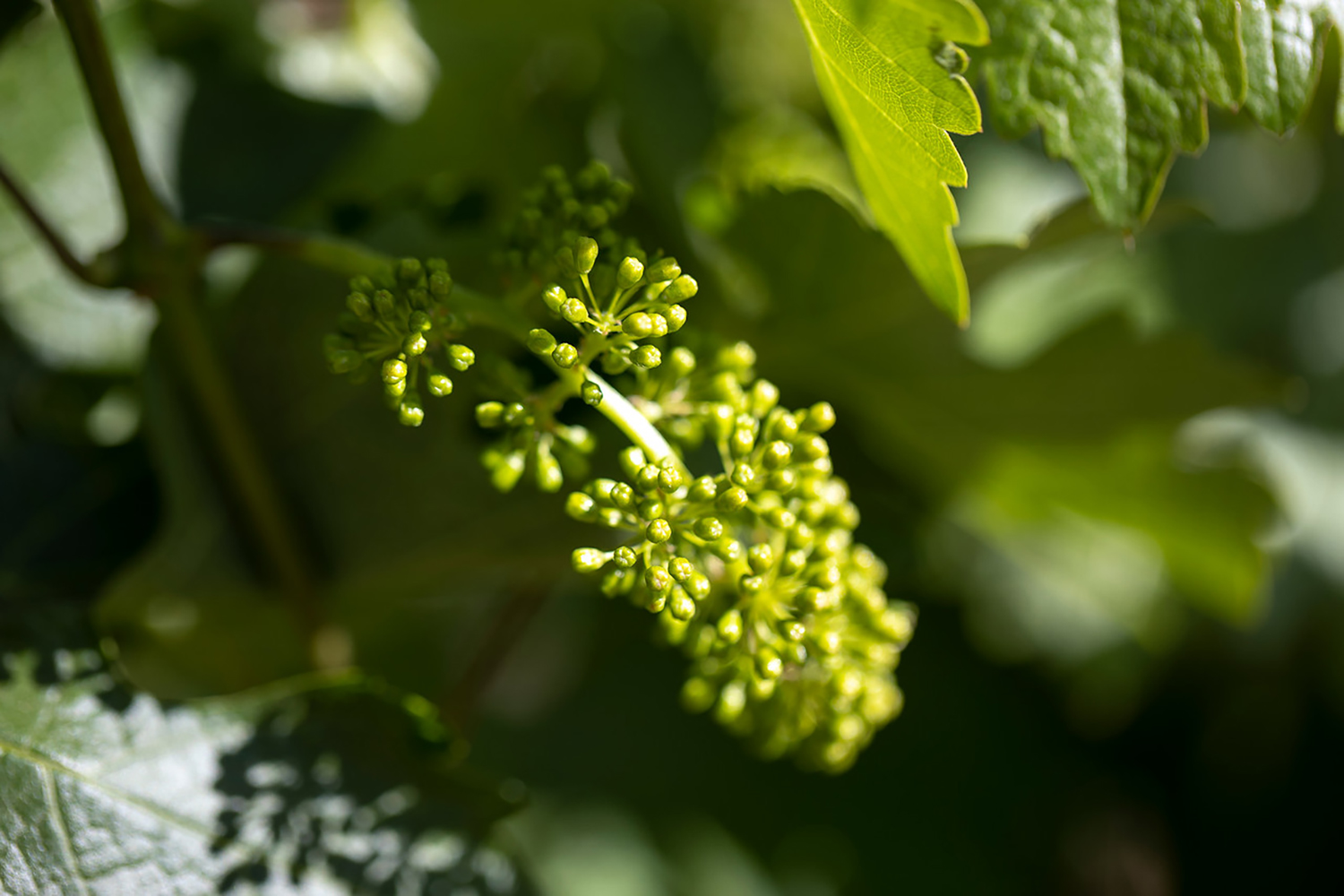The time has come, spring has sprung! Spring is a magical time in the Napa Valley as vibrant yellow mustard cover crops line the rows of vineyards adding nutrients back to the soil, while the new buds create a halo of lime green. If you’ve never seen the colors of the Napa Valley in spring, we suggest adding a trip to your bucket list, and making a stop at Frank Family Vineyards, a top priority! As the days begin to lengthen and warm, the vines wake up from their deep winter slumber and bud break signals the beginning of the 2021 growing season.

Bud Break
The Cabernet Sauvignon vineyards at our western-facing Winston Hill estate, experienced bud break around the second to third weeks of March this year. Cabernet Sauvignon is often a late bloomer, with Sangiovese at the top of the hill budding first, followed by our Chardonnay and Pinot Noir down in Carneros. Bud break occurs when the new year’s leaf tips push through the woody flesh and become visible. The warmer temperatures of spring spark vitality in the vine, bringing it back to life. After a long dormant winter, the vine now has one goal: to restart photosynthesis and generate new energy. It is no longer dependent on the low energy preserves during the cold winter months and will soak up ample rays of California sunshine in order to grow and produce a bountiful harvest.
Flowering
In late spring, approximately 40-80 days after bud break, we welcome the arrival of grape flowers, or “flowering.” It is during this stage of the growth cycle that pollination and fertilization occurs, resulting in a grape cluster. While most plants require the assistance of bees to help pollinate, grapevines are hermaphroditic meaning they possess both male and female parts and are therefore self-pollinating. All they ask is that the average daily temperatures stay between 59-68 degrees F. Flowering is a very delicate and important stage in the growth cycle. Every vineyard manager dreams of a mild spring that leads to an even fruit set, because at this stage you can almost certainly determine your crop yield and berry size for the year’s harvest. These delicate, young berry clusters can easily be damaged by rain, wind or the most prominent threat: cold temperatures.

Frost Prevention
As the young clusters begin their growth journey, our viticulture team is closely monitoring the vineyards to ensure the vines and their new clusters have the most desirable growing conditions. If the weather gets too hot, the vines will grow too fast, and if the weather gets too cold, they could freeze and stunt their growth. In a perfect world, we would have mild temperatures throughout the season. However, during the spring months in the Napa Valley we can experience major temperature fluctuations which may put our vineyards at risk of frost at night. Luckily, there are a few methods we can use for protecting against frost:
Wind Machines: If you take a drive through the Valley, you might see a tall tower in the middle of a vineyard that looks like an airplane propellor. This is a wind machine. When temperatures drop to 32 to 34 degrees F in the night, farmers turn on the machines to avoid frost. The machines use an inversion layer to draw warm air from 30-80 feet above and mix it with the cool air settling near the ground.
Over-Vine Sprinkler System: While this sprinkler method may seem counter-intuitive, spraying the vines with a fine mist of water will actually protect the canes and buds against damaging frost. When the water changes to ice and encases the vine, it releases a small amount of heat (known as latent heat) which protects the vine from any damage.
Natural Elevation: You may have heard the term: heat rises. The same principle applies in nature, including hillside vineyards such as our Winston Hill Vineyard. During the nights when temperatures drop to freezing, the coldest air will settle to the valley floor. Meaning that our hillside vineyards have natural elevation on their side.
Next Up: Fruit Set
Now that the new berry clusters have been introduced for the 2021 growing season, we eagerly wait for warmer summer days (typically in June) when fruit set will take place and the grapes will begin to form. Follow @frankfamilyvineyards on Instagram to see the vineyard growth cycle in real time!
We’ve come so far… Get caught up on the 2021 growing season by reading the last post in this series: A Year in the Life of Cabernet Sauvignon: Winter
















